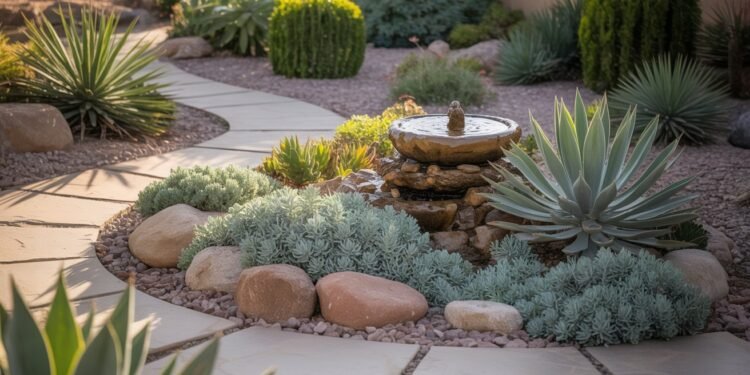Last Updated on October 15, 2025 by admin
Landscaping Solutions for Drought-Prone Areas
As climate change intensifies, many regions around the world are experiencing prolonged periods of drought. This poses a unique challenge for homeowners and landscapers who wish to maintain beautiful, sustainable outdoor spaces. However, with the right strategies, it’s possible to create a lush landscape that thrives even in arid conditions. This article explores effective landscaping solutions for drought-prone areas, offering practical advice and creative ideas to help you transform your yard.
Understanding Drought-Resistant Landscaping
Drought-resistant landscaping, often referred to as xeriscaping, involves designing your garden or yard with water efficiency in mind. This approach minimizes the need for irrigation and ensures that your landscape can withstand dry spells. The key components of drought-resistant landscaping include selecting suitable plants, optimizing soil conditions, and implementing efficient watering techniques.
Choosing the Right Plants
One of the most crucial aspects of creating a drought-resistant landscape is selecting plants that are naturally adapted to dry climates. Native plants are often the best choice, as they have evolved to thrive in the local environment. Consider incorporating a mix of grasses, succulents, and shrubs known for their drought tolerance. Popular choices include lavender, sage, yucca, and ornamental grasses such as blue fescue.
Soil Preparation and Mulching
Healthy soil is the foundation of any successful landscape. In drought-prone areas, improving soil structure and fertility is essential. Start by incorporating organic matter, such as compost, to enhance the soil’s ability to retain moisture. Additionally, applying a layer of mulch around plants helps to conserve soil moisture, suppress weeds, and regulate soil temperature.
Efficient Watering Techniques
While the goal is to reduce water usage, strategic watering is still important for maintaining a healthy landscape. Implementing a drip irrigation system is one of the most efficient ways to deliver water directly to plant roots. This method minimizes evaporation and ensures that water is used effectively. Additionally, watering early in the morning or late in the afternoon reduces water loss due to evaporation.
Hardscaping and Design Considerations
Incorporating hardscaping elements such as pathways, patios, and decorative stones can enhance the aesthetics of your landscape while reducing the need for water-dependent plants. Consider using permeable materials that allow rainwater to seep into the ground, replenishing the soil and maintaining the natural water cycle. Additionally, grouping plants with similar water needs together can optimize irrigation efficiency.
Conclusion
By adopting these landscaping solutions, you can create a beautiful, sustainable outdoor space that thrives in drought-prone areas. Whether you’re a homeowner or a professional landscaper, these strategies will help you make the most of limited water resources while enhancing the beauty and functionality of your landscape. For more personalized advice or to find Landscaping near me, consider consulting with local experts who specialize in drought-resistant landscaping.
Remember, with a little creativity and planning, you can transform your yard into a resilient and stunning oasis that conserves water and supports the environment.









